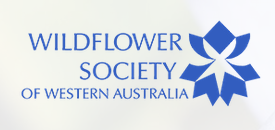
Image taken from http://www.artflakes.com/en/products/grass-trees-in-wind-xanthorrhoea-preissii-lancelin-region-western-australia
2014 is almost over and summer is finally here. Here in the south west you know it is definitely summer time when the Nuytsia floribunda aka the WA Christmas trees are nothing but a sea of orange and butterflies and other insects fill the air.
Although spring may be over many of our wonderful native plants continue to flower, including one of our most well-known southwest species the Grass Tree.
The Grass Tree belongs to the plant family Xanthorrhoeaceae and to the genus Xanthorrhoea. Xanthorrhoea is native as well as endemic to Australia. There is a total of 66 species of Xanthorrhoea, 10 of which occur in Western Australia. Of these 10 species the most well-known and recognisable species is Xanthorrhoea preissii, more commonly known as the Grass Tree.
Xanthorrhoea are shrubs or arborescent (tree like), evergreen (retains leaves year round), perennial (lives for more than two years) resinous plants. Their leaves are simple, linear, leathery, alternate and spiralled. Xanthorrhoea have a spiked florescence of white, cream or hyaline (glassy/transparent) flowers. Each flower has 6 stamens and 6 tepals (sepals and petals are indistinguishable). Xanthorrhoea flower from June to January.

Image taken from http://www.pacificbulbsociety.org/pbswiki/files/Xanthorrhoea/Xanthorrhoea_preissii_close_msi.jpg
Xanthorrhoea preissii or grass trees are tree like perennial herbs that can grow to over 5 m tall. They have long linear simple leaves and an inflorescence spike that can grow to 2.5 m. The individual flowers are white or cream, each with 6 tepals which are 8 – 10 mm long with recurved tips.
Grass trees are found mainly in woodlands and forests and on ranges, the coastal plain and near water courses usually growing on black sands, grey-brown loam, brown gravelly sandy clay, laterite or granite. They occur throughout the southwest region and their range is from Geraldton to Albany.
Xanthorrhoea preissii flowers from June to December and the flower spikes of these wonderful plants are stunning and they attract an excellent array of insects.
Sources:
- Wheeler, J., Marchant, N. and Lewington, M. (2002). Flora of the South West of Western Australia, Volume 1. Australian Biological Resources Study and University of Western Australia Press. Perth, Western Australia.
- Florabase





